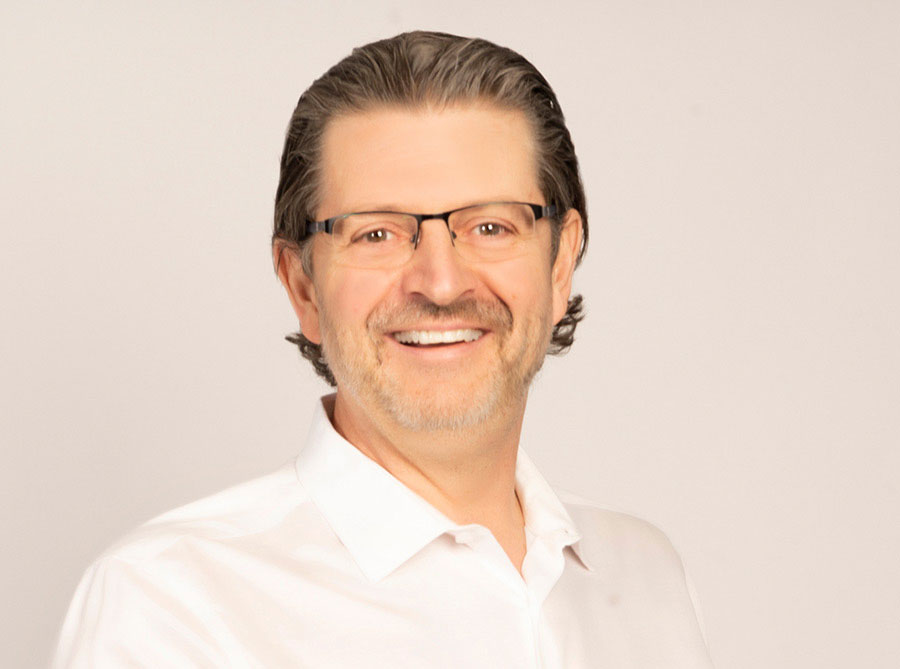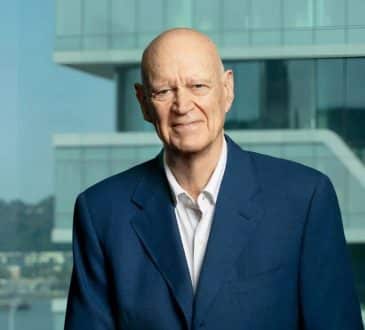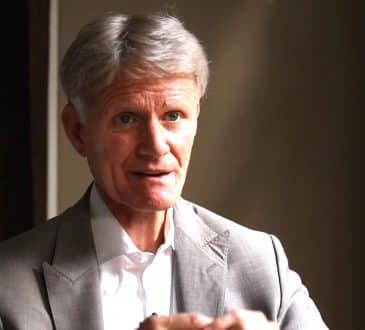A CEO’s playbook for workplace psychological safety

Workforces consist of people driven more by emotions than logic. How workers feel impacts their performance, wellness, and disability risk and the organization’s attraction and retention of employees, productivity, and sustainability. CEOs who care about workers’ feelings are open and willing to learn how they can influence how much workers feel valued, have a sense of purpose, and belong.
In Good to Great, Jim Collins uses the term “brutal facts” to advise CEOs to care about their workers’ feelings to get the most potential out of their workforce. CEOs can understand the average employee experience by knowing how many arrive with a sense of purpose, value, and belonging and how many show up to collect a paycheck.
Workers’ motivation to do their best work goes beyond money and benefits. Their day-to-day workplace experiences drive it. An estimated 92% of CEOs feel their organization is empathetic, but only 50% of employees report their CEO is empathetic. Retaining a workforce in a time of unprecedented uncertainty requires CEOs to increase the proportion of workers who feel they belong in their organization, are valued, and have a purpose.
What is a psychologically safe workplace?
A psychologically safe and healthy workplace promotes and supports workers’ mental (behavioral) health and protects it from harm caused by negligence or recklessness. Amy Edmondson, Novartis professor of leadership at Harvard, advises CEOs that accepting all workers are fallible is a critical ingredient of a psychologically safe workplace.
A psychologically safe workplace starts with the CEO’s desire to create a work culture where all employees feel welcomed, valued, belong, included, and safe to speak up. A core requirement is the CEO and leaders’ commitment to replace fear and silence with innovation that encourages workers to learn, grow, and thrive. Organizations can help employees thrive by committing to clear expectations and accountability and creating a learning culture.
A psychologically safe culture is not about avoiding holding employees accountable, coddling them, or hyper-focusing on political correctness. It’s about driving out fear and silence to engage workers to contribute their ideas, challenge the status quo, and learn. Creating a psychologically safe culture is rewarding and challenging because humans are emotional and not always logical under stress.
What is the business case for caring about workplace psychological health and safety?
There is ample evidence to make the business case for CEOs to create psychologically safe workplaces. Gallup reported that three in 10 U.S. workers strongly agree that their opinions count. When this ratio was moved to six in 10 by impacting the employee experience, it resulted in a 27% reduction in turnover, a 40% reduction in safety incidents, and a 12% increase in productivity, proving again that how employees feel matters to the bottom line.
Howatt HR’s research leveraging the Mental Fitness Index (MFI) found that employees who came to work in the mental state of flourishing had a low risk of presenteeism and sick time. We learned that organizations’ programs can positively impact workers’ resiliency. Organizations that reported the highest workforce treatment scores in Just Capital’s rankings outperformed the Russell 1000 by 4.7%. This data provided further evidence that a high MFI score can give insight into the benefits of investing in workplace mental health initiatives.
One Lancet study suggested that employers can save $2-$4 in costs for every $1 invested in evidence-based mental health programs. There is a movement with environment, social, governance reporting to pay more attention to what employers are doing to support and protect workers’ mental health.
In 2021, more than 3,000 signatories to the Principles for Responsible Investment recognized that mental health is a critical societal and workplace issue. BlackRock CEO Larry Fink’s high-profile annual letter credited the firm’s strong performance to his employees’ overall health.
CEO playbook
Most CEOs understand that they must adhere to a Plan – Do – Check – Act (PDCA) approach for occupational health and safety (OHS) programs to work. The goal of any OHS program is to control risk and mitigate physical harm. Employers who care about OHS protect employees from injury and death by using a PDCA approach, regularly auditing, taking corrective actions, and measuring and focusing on continuous improvement.
Creating Psychological Safe Cultures at Work outlines how some employers treat machines better than people. One observation in this e-book is that employers typically anticipate machinery breakdowns and focus on preventive maintenance to prevent downtime. Programs like EFAP and access to psychologists support employees’ mental health. What is missing are energy and focus on prevention that create habits in the culture that reduce workers’ risk of mental harm and promote mental health.
A core imperative for using his CEO playbook on psychological health and safety is accepting that words are not enough. Random acts of wellness do little to protect workers from mental harm. Impact requires playing the long game by adopting a PDCA approach to workplace mental health prevention and support. CEOs do not need to author their organizations’ psychological health and safety game plan. Their role is providing direction and suggesting actions.
CEOs who lean into psychological health can reduce the stigma and attitudes around mental (behavioral) health by learning the difference between mental health and mental illness. Experiencing poor mental health (e.g., languishing) does not mean a worker is mentally ill. A person with a mental illness diagnosis can experience periods of physical, mental, and social wellbeing.
Following are key terms to guide CEOs toward creating and maintaining a psychologically safe culture that can positively impact employees’ experience:
- Mental (behavioral) health refers to the internal and external behaviors that support employees’ emotional wellbeing. Mental health can be thought of as the percentage of time a person spends in pleasant versus unpleasant emotions. All employees have mental (behavioral) health that determines how much time they feel good about work and life and functioning emotionally well (flourishing) and how much feeling blah impacts their functioning at work and home (languishing).
- Psychosocial risk factors can charge or drain employees’ experience. Employees feel charged when they can handle their workload because tasks are properly organized. Feeling overwhelmed and overloaded can be a drain that may lead to mental harm like burnout. ISO 45003:2021 provides guidance for mitigating mental harm and promoting mental health. CEOs are advised to pay close attention to the percentage of workers experiencing isolation and loneliness, negatively impacting their resiliency. The Lancet reported why employers must pay attention to isolation and loneliness. Regarding “the workers assigned periods of perceived isolation,” it found that even less than 10 days can have long-term effects, with the presence — up to three years later — of psychiatric symptoms.
- Psychosocial hazards are factors like a controlling leader that can increase workers’ risk of stress and burnout, leading to mental harm, injury, and illness. Employees fatigued at work are a danger to themselves and others. Chronic stress impacts problem-solving and decision-making, slowing down productivity and increasing mistakes. Like machines, workers have limits and breaking points. When not managed, the results are increased costs of sick leave, STD/LTD/WCB disability claims, turnover, and lost productivity.
- Protective factors include mental health and human resources initiatives like flexible work schedules, career development, rewards, and recognition programs. Workplace mental health’s primary purpose is protecting workers. Integrating psychological health and safety into the employee experience increases inclusion and impact. Protective factors can be created for: Prevention — programs and policies designed to reduce mental harm and promote mental health. Included are respectful workplace initiatives, inclusion, and mental fitness programming to facilitate resiliency through education and measuring and tracking progress with an evidence-based mental health app. Supports — EFAP, internet cognitive behavioral therapy (iCBT), critical incident and suicide hotlines.
- Strategies recommended for any workplace:
Get an evidence-based psychological health and safety baseline. A PDCA approach requires a baseline of what psychosocial factors and hazards have the most positive or negative impact. It is helpful to understand where the workforce sits on the flourishing to languishing continuum and what programs are working. Evidence-based tools like the MFI provide results and guidance for employers and employees. Ensure that any tool chosen has been validated and designed for psychological health and safety. Train leaders to be psychologically safe. Poorly-organized work and ineffective leadership are leading causes of stress in the workplace, resulting in an estimated $190 billion in healthcare costs and 120,000 deaths per year. Leaders account for 70% of the variance in employee engagement. Research shows that supporting leaders to become psychologically safe leaders is an important protective factor for supporting employees’ emotional wellbeing that drives their workplace experience. Promote mental fitness. The last line of defence in OHS is personal protective equipment. In mental health, it’s personal psychological protection. Mental fitness is how employers can support employees to develop habits to be resilient and cope with stress proactively.
CEOs can build psychologically safe workplaces by creating a vision, taking a PDCA long-game approach, and regularly asking how well the organization is developing a place where employees want to come to work every day.
Written by Dr. Bill Howatt.
Have you read?
Global Consultancy Assuras Shaking Up The Industry with CEO Tyler King’s Unique Approach To Complex Problem Solving.
Forget Fiduciary Trust – CEOs Have a Bigger Job by Bob Priest-Heck.
3 Reasons Why a Systematic Approach Gives Traders an Edge by Andrea Unger.
Vulnerability and the modern leader by Kerry Swan.
Bring the best of the CEOWORLD magazine's global journalism to audiences in the United States and around the world. - Add CEOWORLD magazine to your Google News feed.
Follow CEOWORLD magazine headlines on: Google News, LinkedIn, Twitter, and Facebook.
Copyright 2025 The CEOWORLD magazine. All rights reserved. This material (and any extract from it) must not be copied, redistributed or placed on any website, without CEOWORLD magazine' prior written consent. For media queries, please contact: info@ceoworld.biz








